So, we have started our new subject project called Persuasion, which after the briefing sounded really good! It sounds slightly different to all of our previous projects so far, especially as we are contacting real companies/organisations as well as putting together our own briefs. The first step was to choose an issue or problem, or just something that we are passionate about therefore I decided to pick the topic of body politics and role models within the media. We had to research our topics in depth and deliver a pecha cucha the following week, which I do always get fairly nervous about due to the public speaking. As I was passionate about this topic I thought that researching and gathering information about it would be easy however I found it more difficult than all previous pecha kuchas. I had so many areas to look into the my research was very time consuming as I wanted to really look into each aspect of it properly. Although I believed in what I was saying, I wanted to word it very carefully as not to offend anyone which I thought was going to be hard as it was a bit of a touchy subject.
Here is my pecha kucha with notes….
 I’m going to be talking about body politics and role models represented within the media.
I’m going to be talking about body politics and role models represented within the media.
I will also investigate the “perfect body”.
I will start by talking about underweight models however will lead onto speaking about overweight models, body changes, health and the history of the human body shape.
 Before completing my pecha kucha I must express that I don’t condone underweight/unhealthy models.
Before completing my pecha kucha I must express that I don’t condone underweight/unhealthy models.
However I don’t want to wholly concentrate on this end of the scale as I want to incorporated many other factors of what a role model is.
 Israel has hugely tackled the problem of underweight models and introduced a new law in 2013.
Israel has hugely tackled the problem of underweight models and introduced a new law in 2013.
First country to introduce a law whereby models most produce medical reports and must not have a bmi lower than 18.5.
They focus on health.
Anything that they digitally alter or enhance must be made clear to the audience.

The Victoria Secret Ad created a huge uproar as they only used one type of (slim) model alongside a “Perfect body slogan.
This effects women self esteem as well as increasing men’s expectation of women.
It is understandable that people and companies fought against this (harmful marketing).
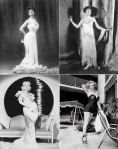 Some history of the female figure.
Some history of the female figure.
1900s-1950s – figures appeared varied and healthy as did the role models.
Of course there’s a focus on appearance but there always has been and always will be.
During the 30s & 40s there were ads promoting the avoidance of being underweight.
They were into being physically active and healthy.
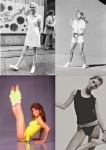 60s – 90s is when the change began.
60s – 90s is when the change began.
Twiggy was a huge role model, although she was slim she was naturally slight and it was in her genes.
The 70s saw a rise in eating disorders.
90s were drastically thinner – the waif look was fashion.
They used terms such as “Nothing tastes as good as skinny feels”.
The media began to really promote unhealthy views of women.
 I didn’t want to wholly focus on this side of road models as it has been a problem for years.
I didn’t want to wholly focus on this side of road models as it has been a problem for years.
It is slowly being tackled and I hope that more countries follow in the footsteps of Israel.
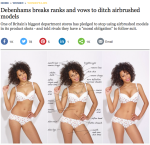
Debenhams have vowed to ban airbrushing.
Their ethos is about making women feel good about themselves and not eroding their self esteem by using false comparisons.
They explored airbrush tricks and have banned airbrushing from some of their ad campaigns.
They try to just stick with minor editing such as removing stray hairs.
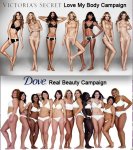
Dove counteracted the Victoria Secret shoot with “The perfect real body”.
They tried to celebrate the REAL woman, although this is good to tackle, in some ways it’s just as bad as they also roughly included only one shape and size (curvy) which is unfair to all the other shapes and naturally slimmer/boyish figures for example.
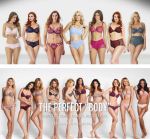
JD Williams also spoke out about VS models as they also do underwear modelling. They Call these women (top image) plus size models which I find outrageous as they are all around size 12. This is not supporting variety and nor does it represent a diverse or natural non glossy representation of women.
 This is the new plus size model Tess Holliday, a body acceptance activist who has caused a lot of controversy. She is size 22, 5 foot 5 and has a bmi of 44.2.
This is the new plus size model Tess Holliday, a body acceptance activist who has caused a lot of controversy. She is size 22, 5 foot 5 and has a bmi of 44.2.
I definitely am not fat shaming and she was bullied when younger however as I don’t think underweight models are acceptable more do I agree with so hugely obese modelling. Everyone gets turned from jobs so it isn’t hugely outrageous that she got turned down as a model when younger. She does have good views about natural beauty and being happy in your own skin.
 I would never say that Tess is unattractive however in my opinion if it’s ok for Tess to be represented as a role model surely it should be ok for the one on the left to be too.
I would never say that Tess is unattractive however in my opinion if it’s ok for Tess to be represented as a role model surely it should be ok for the one on the left to be too.
Neither of these women are really capturing and promoting what health is.
Neither looks were promoted between the 1900s and 1960s.
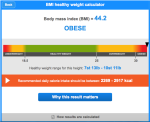 It is admirable that she does not adhere to photoshopping.
It is admirable that she does not adhere to photoshopping.
She did however say “This has ZERO to do with health and all to do with believing in yourself”.
She works out regularly however there are studies to say that many obese people are metabolically healthy (normal blood pressure, sugars etc) however it leaves out other health risks & the possibility of premature mortality.
 It is true that obese people can live long and moderately healthy lives but so can heavy smokers.
It is true that obese people can live long and moderately healthy lives but so can heavy smokers.
We don’t ever promote smoking, in fact it is all about anti-smoking and how harmful it can be, even on the packages themselves.
I feel that it isn’t good promotion with the huge increase in obesity.
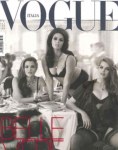 These three women are considered to be plus size and were used to combat eating disorders.
These three women are considered to be plus size and were used to combat eating disorders.
Purely calling them plus size models is making women think differently about their size.
I don’t think they should be called plus size as they look visually healthy.
 I then looked at the definition of health which is “Health is a state of complete physical, mental and social wellbeing and not merely the absence of disease or infirmity” this hasn’t been amended since 1948.
I then looked at the definition of health which is “Health is a state of complete physical, mental and social wellbeing and not merely the absence of disease or infirmity” this hasn’t been amended since 1948.
I feel that the Israelian law is positive in regards to health.
 When choosing a campaign I initially thought Dove.
When choosing a campaign I initially thought Dove.
I saw one of their ads which included a variety of women however it was accompanied by “Health is the new skinny”. This is pretty much implying skinny/slim as a negative and not “in” anymore. Whereas they should celebrate all sizes fairly.
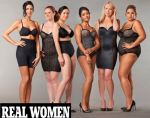 I then decided on m&s. When looking through their ads I noticed that they included all ages and healthy sizes. I didn’t see many slogans trying to get ‘one-ups’ on anyone else.
I then decided on m&s. When looking through their ads I noticed that they included all ages and healthy sizes. I didn’t see many slogans trying to get ‘one-ups’ on anyone else.
Unfortunately I still found flaws such as all the women being almost the same height and how extremely photoshopped they are.
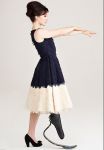 I decided to finally choose Debenhams.
I decided to finally choose Debenhams.
They are the first high street shop to sign a new code of conduct for models’ working conditions.
They use a diverse variety of models, including disabled models.
They try to champion healthy body images and banned airbrushing in some of their shoots which is a big step considering the competition around them.
They are about positive body image in general.
 I chose this issue because there is no such thing as a ‘perfect body’ and organisations trying to get one ups on each other isn’t working as few organisations actually show any variety or naturalness of the human body. I feel that no extremity should be considered as a role model – health should.
I chose this issue because there is no such thing as a ‘perfect body’ and organisations trying to get one ups on each other isn’t working as few organisations actually show any variety or naturalness of the human body. I feel that no extremity should be considered as a role model – health should.
I was pretty nervous to deliver this but I think it went well and i’m really glad that I research it so thoroughly. My feedback was pretty positive and I was told that I sounded passionate and that it was well researched.
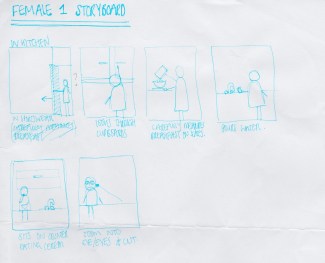
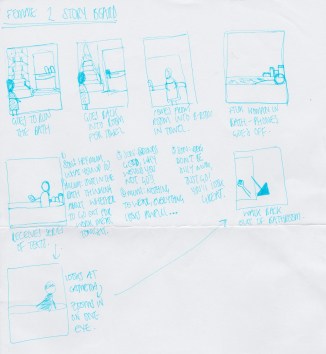


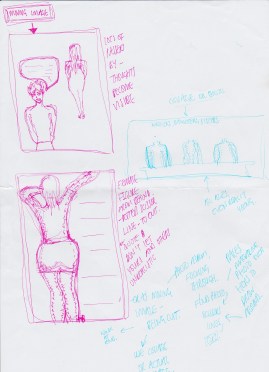

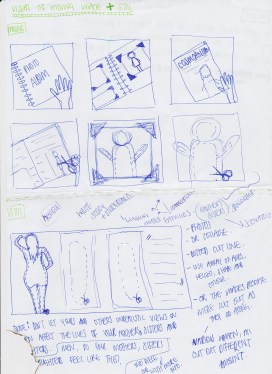
 So here I am looking at projections, collage, poster ideas and photography but still pretty unsure as to where to where to go with it. However I do know that I need to link ‘diversity, health and shape’ whilst predominantly trying to target a male audience.
So here I am looking at projections, collage, poster ideas and photography but still pretty unsure as to where to where to go with it. However I do know that I need to link ‘diversity, health and shape’ whilst predominantly trying to target a male audience.
 Before completing my pecha kucha I must express that I don’t condone underweight/unhealthy models.
Before completing my pecha kucha I must express that I don’t condone underweight/unhealthy models.

 Some history of the female figure.
Some history of the female figure. 60s – 90s is when the change began.
60s – 90s is when the change began. I didn’t want to wholly focus on this side of road models as it has been a problem for years.
I didn’t want to wholly focus on this side of road models as it has been a problem for years.


 This is the new plus size model Tess Holliday, a body acceptance activist who has caused a lot of controversy. She is size 22, 5 foot 5 and has a bmi of 44.2.
This is the new plus size model Tess Holliday, a body acceptance activist who has caused a lot of controversy. She is size 22, 5 foot 5 and has a bmi of 44.2. I would never say that Tess is unattractive however in my opinion if it’s ok for Tess to be represented as a role model surely it should be ok for the one on the left to be too.
I would never say that Tess is unattractive however in my opinion if it’s ok for Tess to be represented as a role model surely it should be ok for the one on the left to be too.
 It is true that obese people can live long and moderately healthy lives but so can heavy smokers.
It is true that obese people can live long and moderately healthy lives but so can heavy smokers. These three women are considered to be plus size and were used to combat eating disorders.
These three women are considered to be plus size and were used to combat eating disorders. I then looked at the definition of health which is “Health is a state of complete physical, mental and social wellbeing and not merely the absence of disease or infirmity” this hasn’t been amended since 1948.
I then looked at the definition of health which is “Health is a state of complete physical, mental and social wellbeing and not merely the absence of disease or infirmity” this hasn’t been amended since 1948. When choosing a campaign I initially thought Dove.
When choosing a campaign I initially thought Dove. I then decided on m&s. When looking through their ads I noticed that they included all ages and healthy sizes. I didn’t see many slogans trying to get ‘one-ups’ on anyone else.
I then decided on m&s. When looking through their ads I noticed that they included all ages and healthy sizes. I didn’t see many slogans trying to get ‘one-ups’ on anyone else. I decided to finally choose Debenhams.
I decided to finally choose Debenhams. I chose this issue because there is no such thing as a ‘perfect body’ and organisations trying to get one ups on each other isn’t working as few organisations actually show any variety or naturalness of the human body. I feel that no extremity should be considered as a role model – health should.
I chose this issue because there is no such thing as a ‘perfect body’ and organisations trying to get one ups on each other isn’t working as few organisations actually show any variety or naturalness of the human body. I feel that no extremity should be considered as a role model – health should.